Crude Conversations
”Crude Conversations” features guests who represent a different aspect of Alaska. Follow along as host Cody Liska takes a contemporary look at what it means to be an Alaskan. Support and subscribe at www.patreon.com/crudemagazine and www.buymeacoffee.com/crudemagazine
Episodes
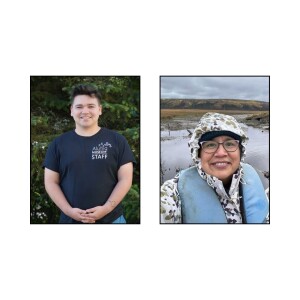
Monday Jun 10, 2024
Monday Jun 10, 2024
In this episode of Chatter Marks, Cody talks to Dehrich Chya and Angela Gonzalez about the cultural importance of Sasquatch. Dehrich works at the Alutiiq Museum in Kodiak and Angela is an Athabascan artist and writer. Dehrich’s perspective is of coastal Alaska. He says that the Alutiiq people call Sasquatch or Bigfoot creatures Aula’aq, and its temperament ranges from being a threat to being a menace to being used as a cautionary tale. For example, parents might use stories of Aula’aq to warn their children away from dangerous areas. And stories of its appearance vary. Some describe it as tall, while others describe it as short, but it’s always hairy and many believe it to be a shapeshifter.
Angela’s perspective is of interior Alaska. Growing up, she says that talking about Bigfoot was taboo, but that there are certain times of the year — mainly winter — when it’s appropriate to talk about it. Bigfoot is a powerful being, so it’s important to give it a lot of respect. While the curious might seek out stories of Bigfoot, others will avoid them out of fear of inviting that presence into their life. Angela says that it comes down to respecting the land, the animals and the water. Because in order to survive, we must live in harmony with our surroundings; we have to respect the symbiosis that exists between humans and nature.
In this Chatter Marks series, Cody talks to storytellers and knowledge holders about Sasquatch, in its many variations, and its personal and cultural importance to the people of Alaska.
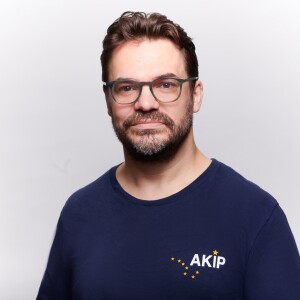
Monday May 20, 2024
EP 152 Exonerating Alaskans with Jory Knott
Monday May 20, 2024
Monday May 20, 2024
In this one, Cody talks to Jory Knott. He’s the Executive Director of the Alaska Innocence Project. The Alaska Innocence Project started in 2008 under the direction of Bill Oberly, and it took seven years for them to get their first exoneration — it was the Fairbanks Four case, in which four Alaska Native men were wrongly convicted of murder and subsequently spent 18 years in prison. Jory says that case involved a number of factors that led to a wrongful conviction, including eyewitness misidentification, incentivized witnesses, confirmation bias, racial animus, misconduct, and bad science. This was the case that got Jory interested in working with the Innocence Project — he was an intern then, but made the decision to go to law school so that he could work there full-time.
Studies that consider the number of people who have been wrongfully convicted in the U.S. since the late-1980s estimate that up to 5 percent of the prison population is wrongfully convicted. In Alaska, that would mean about 150 innocent people are in prison. Nationally, the average person who is wrongfully convicted spends 12 years in prison before they’re exonerated. And Alaska is among about a dozen other states that do not have a wrongful conviction compensation statute, so exonerees don’t get any money following their release. Even convicted felons receive things like re-entry services, recidivism prevention, education, job services and drug counseling. But Jory says that, despite all of this, he still has faith in the criminal justice system because, for the most part, it gets it right and wrongful convictions are rare.
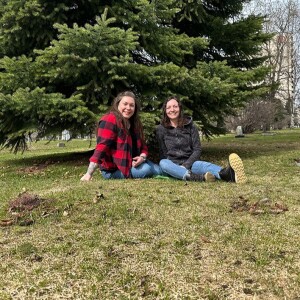
Thursday May 09, 2024
EP 151 Things can get better with Heidi Huppert
Thursday May 09, 2024
Thursday May 09, 2024
In this one, Cody and co-host Aurora Ford talk to Heidi Huppert. Aurora is a former journalist and currently works at Covenant House Alaska; Heidi is the Chief Program Officer at Covenant House. Heidi’s perspective on homelessness in Alaska is unique because, in her younger years, she spent time on the streets of Anchorage. Her mom had a violent and abusive boyfriend and Heidi didn’t feel safe at home. So, one night after an especially brutal domestic situation, she found herself wandering around Spenard, trying to figure out what she was gonna do. She was about 12 years old and she had school in the morning. Because it was open and because it was familiar, she ended up just hanging out at McDonald’s.
She says that, for a long time, she didn’t tell her story. It was just too hard to relive those memories, and the violence and the pain that came with them. But right now, she’s at a point in her life where she sees how much power and strength there is in telling her story. How it can potentially help a young person understand that they might be in the middle of the worst moment or moments of their life, but it won’t last forever. Things can get better.
Heidi says that the issues of homelessness and human trafficking — another issue that she deals with a lot at work — are ones that we have to care about because they involve young people and they are the future of Alaska. They will one day hold the political, economic and social power. So, if we want our state to be healthy, we have to care about what is happening to our young people.
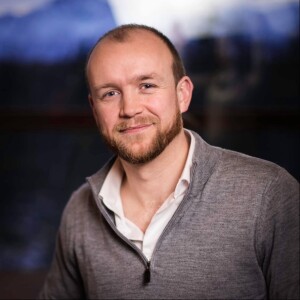
Wednesday Apr 24, 2024
EP 150 Furniture, basketball and family with Buddy Bailey
Wednesday Apr 24, 2024
Wednesday Apr 24, 2024
In this one, Cody talks to Buddy Bailey. In the late 1990s, Buddy became the face of his dad’s furniture business, Bailey’s Furniture. He was 7 years old when he appeared in his first commercial — the crew filming it realized that the furniture itself didn’t have much character, so they suggested that Buddy get in front of the camera. He was a natural — his charisma and affability came easy. He’d chat about furniture and deals, and he’d even spin a basketball on his finger while he did it.
As the years went on, he became a local child celebrity. He continued being in Bailey’s Furniture commercials, and he was becoming a rising basketball star. When he was 15 or 16 years old, he remembers the Anchorage Daily News came out with a list of the most recognizable faces in Alaska and Buddy was number two, right behind U.S. Senator Ted Stevens.
He says the lessons he learned from working at Bailey’s Furniture helped him on the basketball court. In basketball, like in retail, you’re dealing with personalities and egos, but you’re not always worried about money. So, basketball was easy. All he had to do was focus on scoring points and winning. This mentality, as well as his skill on the court, brought him all the way to playing college ball.
Today, he no longer works at Bailey’s Furniture, he quit in 2013 to pursue a career in finance and then in 2020 he founded a virtual lease-to-own business. He no longer plays ball semi-professionally either, but he does play recreationally. He says he’s probably a better shooter than he ever was and a better overall basketball player. He plays one-on-one almost every day at his local gym. He also coaches both of his kids’ basketball teams, teaching them that it’s not always about winning, it’s about learning life lessons and values — accountability, work ethic, the ability to fight for what you believe in, and how all of that will eventually filter over to your family.
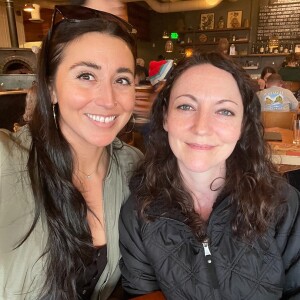
Thursday Apr 18, 2024
EP 149 Human trafficking in Alaska and decolonizing data with Josie Heyano
Thursday Apr 18, 2024
Thursday Apr 18, 2024
In this one, Cody and co-host Aurora Ford talk to Josie Hayano. Aurora is a former journalist and works at Covenant House Alaska; Josie is a member of the United States Advisory Council on Human Trafficking, a presidentially appointed position. She was the first Alaska Native person to be on the board. Every member of the board is a human trafficking survivor and advises and makes recommendations on federal anti-trafficking policies. Josie’s perspective and contribution to that conversation is Alaskan. She’s often thinking about rural communities and the human trafficking issues they face — she says that most of the trafficking she’s seen there has an element of substance use coercion, mental health coercion and/or forced drug trafficking. And because of the remoteness of these communities, it could take three days and a float plane and a boat ride to respond to a crime.
In 2022, Josie, Charlene Apok of Data for Indigenous Justice, Prevention Now and Ride My Road started a yearly gathering called “The Alaska Data Summit: Translating Data into Action Against Trafficking Exploitation and Missing and Murdered Indigenous Relatives.” One of the missions of the summit is to decolonize data so that, in the future, Native communities can reclaim and own their own data. It’s about taking back information so that it can be used for healing. Josie says that it’s about “making the data tell our stories” and “making it be representative of who we are.” Because data is a universal language, it doesn’t matter what field you work in, we all can understand numbers and their prevalence. So, by creating a universal data system throughout Alaska, information can be shared within the community, paving a path for a deeper understanding and better solutions to human trafficking.
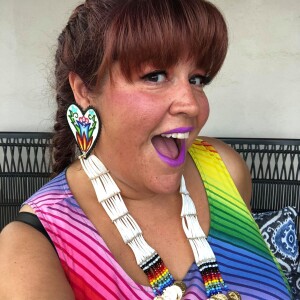
Thursday Mar 28, 2024
Thursday Mar 28, 2024
For years, Shyanne Beatty has wanted to move back home to Eagle, Alaska. It’s where everything started for her — her love for culture, language, art and music. Today, she sits on her property in Eagle, along the Yukon River, and she imagines herself as a young girl, running down the river banks with about 20 sled dogs or trapping marten out at 40 Mile or walking to school, singing to herself to ward off any curious wildlife. Reflecting on this, she realized that music has been foundational for so much in her life, it’s carried her and it’s protected her. Radio too. She remembers one Thanksgiving out at 40 Mile, she and her dad were listening to “Trapline Chatter” and they heard her grandparents wishing them a Happy Thanksgiving. The reach of radio had made its impression on her. So, when she left Eagle, that passion for radio and love for culture, language, art and music manifested itself in “Earthsongs,” the radio show she hosted on KNBA in Anchorage. It highlighted indigenous artists, musicians, and it was the first nationally-syndicated show out of the state of Alaska.
Shyanne is in the process of revitalizing her Native language, Han Hwechin Athabascan. There are only four people left who can speak the language, and she says the process of learning it has been difficult because people have been resistant to teaching her. This is because land, subsistence rights, language, culture and even children were taken away from her people. So, the insistence on guarding these things is understandable. To learn the language, Shyanne resorted to a more academic setting, mainly through classes.
Lately, for about six hours a week, she’s been working with her aunt to continue learning and documenting the language. Usually they get together and cook, chatting with each other in Han Hwechin the whole time. And for all this, she wanted to be back in Eagle, on her traditional lands; to have that sense of place and belonging. Because learning and documenting her culture and lifeways is one thing, but it’s also about creating a reservoir of culture that future generations can learn from.
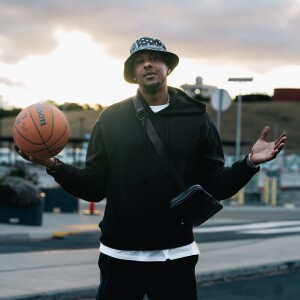
Monday Mar 11, 2024
Chatter Marks EP 82 A chip on my shoulder with Mario Chalmers
Monday Mar 11, 2024
Monday Mar 11, 2024
Mario Chalmers is part of a small group of Alaskans to be drafted to the NBA, including guys like Carlos Boozer and Trajan Langdon. He’s won championships at every level: Two high school championships, one NCAA championship — the one where his 3-pointer put the game into overtime, with his team taking the win — and two NBA championships. He was in the NBA for nine seasons — seven years for the Miami Heat, one for the Memphis Grizzlies and one waived because of an injury. In those nine years, he was part of 99 playoff games. He played alongside guys like LeBron James and Dwyane Wade. He was the starting point guard for the Miami Heat when they won two championships in 2012 and 2013. He says that the only thing he has left to win is an Olympic gold medal.
In 2016, Mario tore his achilles tendon. It was a pivotal moment in his career, one that eventually led to him retiring from the NBA. But before he was comfortable with retiring, he tried making his way back by way of playing in G-League and overseas. Overall, he enjoyed his time playing outside the NBA, but he found himself reflecting on his career more than he was trying to regain it; he found himself being proud of his accomplishments and accepting this new chapter of his life, where he’s a full-time dad. He says it really dawned on him in 2021 when the Miami Heat signed him to a 10-day contract. He says that even though he didn’t get to play, it gave him the closure he was seeking — being able to walk off the court, healthy and on his own terms.
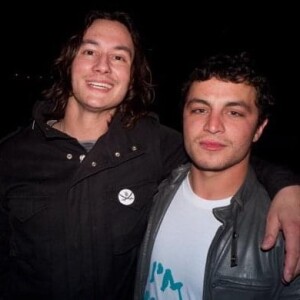
Sunday Mar 03, 2024
EP 148 Skating Anchorage in the ‘90s with Anthony Black and Jerry Smyth
Sunday Mar 03, 2024
Sunday Mar 03, 2024
In this one, Cody talks to Anthony Black and Jerry Smyth. They both grew up skateboarding in Anchorage in the ‘90s, before there were really any designated areas for skaters. Besides summer skateparks like the one in the outside Ben Boeke ice rink and the Girdwood skatepark, 40 miles outside of Anchorage, spots were few. So, in the summer they skated places like Abbott Loop Elementary, Hanshew Middle School and the flatbank and box set-up at their buddy Micah Hollinger’s house. In the winter, it was indoor garages, and before 9/11 Elmendorf Air Force Base had an indoor skatepark that was open to the public. And when they were feeling ambitious, they drove to Nikiski, 170 miles outside of Anchorage, to skate a couple ramps and flat-bars at Brandon Chenault’s warehouse. Jerry says it was brutal. He remembers people getting so desperate that they’d break into the University of Alaska Anchorage to skate in the winter months. It was a struggle to be a skater back then because you had to really want it.
Skating was an integral part of Anthony and Jerry's lives. It’s what they spent most of their adolescent and teenage years doing and it’s where they met most of their friends — many of them they’re still friends with to this day. And to be part of that crew, you had to have thick skin — they were hard on each other, but underneath all the ruthless jokes, there was always love. If you got a nickname, however cruel, you were usually in; if you got made fun of and you could handle it, you were in. And in the middle of all this — the skating and the hating — they were getting shots for the Boarderline snow and skate videos. It was a ritual that, in the best of cases, ended with a full video part that premiered at places like the Fourth Avenue Theatre. Looking back on those videos now, Anthony says his favorite clip is probably his switch heelflip down the 10-stair at East High School and Jerry says it was the crooked grind he did down the handrail at O’Malley Elementary.
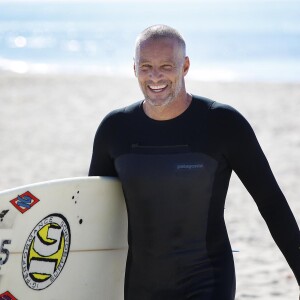
Friday Feb 23, 2024
EP 147 For the glory and the story with IG
Friday Feb 23, 2024
Friday Feb 23, 2024
In this one, Cody talks to Dan Egan, better known as IG. In 1986, he started IG Boarding Shop. At the time, he was competing in big wave surfing, but there really wasn’t much money to be made in it. So, he thought, instead of trying to be in the contests and scraping by, maybe he’ll just make surfboards for all surfers he knows. His surf shop soon blossomed into a full retail store and for 25 years IG made and sold his own surfboards, skateboards and snowboards. In total, he hand-shaped about 4,500 surfboards, thousands of skateboards and about 1,500 snowboards.
But what he really wanted was to make enough money so that he could go surfing and snowboarding. So, every year he would take weeks and months off work to ride. And as snowboarding got bigger, IG found a new place to explore: Valdez. Those early days of riding Thompson Pass saw heli rides for as low as $15, $20 and $25. It was a common occurrence for anyone riding that area at that time to get a first descent. And they were doing it with no guides. They’d ride mountains all day long — Diamond, Python, Stairway, Hog’s Back, Billy Mitchell — and then party all night. It was a wild time, on and off the mountains.
And in the middle of all this, IG, along with my dad, Scott Liska, were pioneering surf spots out of Resurrection Bay. At the time, most everyone they talked to about surfing in Alaska told them that it was impossible, it was just too cold. But they were determined. IG tells the story of the first time they found surfable waves out by Latouche, Elrington and Montague islands. It was IG, my dad and Giles and Sebastian Landry of Turnagain Hardcore and the waves were barreling. My dad checked the fish finder for depth and water temperature. It was a little cold for the wetsuits they had, but they jumped in anyway. The first wave IG caught was a triple barrel. It was only about a foot overhead, but it barreled right over the rocks. Over the next couple of years, they would find about 25 surfing spots.
IG says that his outlook on life comes from his relationship to surfing. That the unique thing about surfing is you have to trust your own judgement — to be optimistic — because you’re relying on so many unpredictable things — the weather, the tide, the wind, the swell. Because when you paddle out to the spot, sometimes it’s flat, so you hope and you dream that it starts pumping and a perfect wave is on its way to you, in that specific spot. That’s the hope IG carries with him throughout his life. When he was just a kid with the idea to start a surf shop, when he came to Alaska because he heard Valdez was the North Shore of snowboarding, and then when his shop closed after 25 years of business and he transitioned to the weed industry.
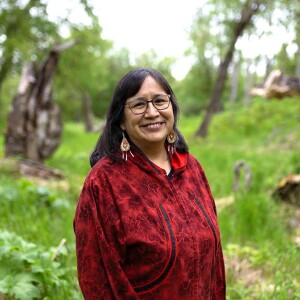
Wednesday Feb 14, 2024
Chatter Marks EP 81 Life lessons from fish camp with Angela Gonzalez
Wednesday Feb 14, 2024
Wednesday Feb 14, 2024
Angela Gonzalez is an artist and a writer, and through her beadwork, her blog — the Athabascan Woman Blog — and the Fish Camp Barbie dioramas she creates, she shares her heritage. She says that it’s all a reflection of the way she grew up. Fish camp was a big part of that. As a kid, that’s where she spent most of her summers, about 16 miles from her home in Huslia, along the Koyukuk River. While the adults were harvesting the fish, her grandma would put Angela’s Barbies in settings that resembled what was happening all around them — catching the fish, hanging the fish, preserving it, cooking it. And then once she was old enough, she helped out with those chores. Angela says that she didn’t realize how special fish camp was until she started creating Fish Camp Barbie dioramas for her own daughters. It was a way to share her life with them and to teach them how to be proud of who they are.
From her time at Fish Camp, Angela also learned the importance of work — that if you want to succeed, then you need to work. Today, this manifests itself in her beading. It’s easy for her to sit down for a few hours and focus on a project. She’s beaded earrings, pins, the tops of gloves, slippers, coasters. A recent project she finished included caribou tufting, raised beadwork and silverberry beads that she harvested herself. She says she’s inspired by the beadwork of her late grandmas and aunts. Their color choices, designs, and techniques. She likes to think about the stories and the experiences that led them to create their art.





